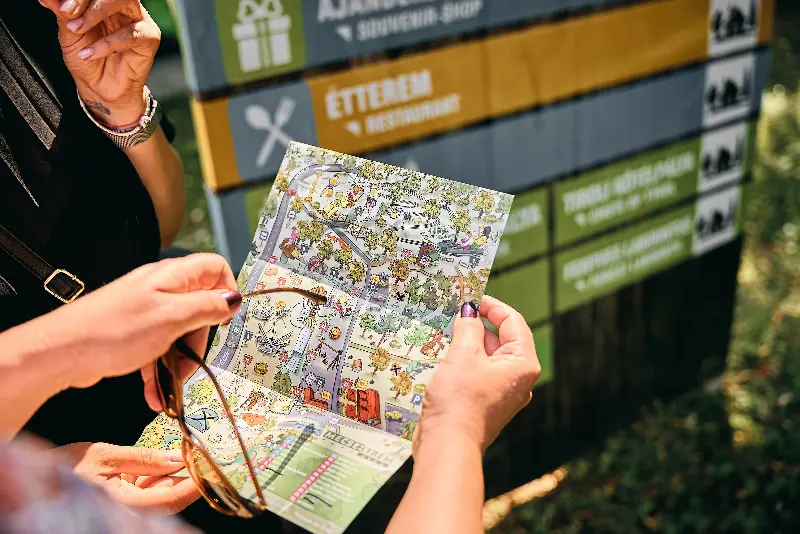
Helyszín címkék:
Special animals and their observation II
Szabó Sára
The bustle of bustards in Dévaványa
There are several attractions in the Körös-Maros National Park that are worth getting in the car for. According to Ádám Ezer, a staff member of the Körös-Maros National Park, the bustard, the national park’s heraldic bird, is something that should be highlighted. According to him, the most spectacular feature of the spring Hungarian puszta (Plain) is the mating dance of this magnificent-looking bird: the courtship display. The spectacular matchmaking takes place from late March to early May in the early morning and early evening. The peak of the mating season usually falls between 10 and 20 April, when you can see roosters performing mating dance even during the day.
The largest population of bustards in Central Europe – more than 600 individuals – lives in the Dévaványa area. For this reason, the Körös-Maros National Park Directorate operates one of its most important demonstration, educational and accommodation facilities here, the István Sterbetz Bustard Protection Visitor Center, which welcomes guests every year between 1 April and 31 October. The bustards (specimens kept for display and unable to live on their own) living in an aviary along the Réhelyi nature trail are guaranteed to be on display during opening hours. The observation tower on the trail provides an excellent view of their habitat in the Plain.

In addition, every year in early May, the Directorate organises the Bustard Festival, which offers a wide range of professional and cultural activities for nature lovers. Only on this day, guests registering on the spot will be able to get an insight into the life and professional work of the bustard protection station, which is not far from here.
Sand lizard in the sand dunes of Fülöpháza
Fully protected as a national park, the Fülöpházi-buckavidék is a special place in our country. May is a month of breathtaking meadows full of Maidenhair fern, and species of animals and plants with special survival strategies. Walking in the sandy plains of the lowlands, you may come across our country’s exotic-looking, decorative reptile, the sand lizard. Even on hot summer days, it spends most of the day on the surface, hunting for small invertebrates. It is only 6-8 cm long, but its tail can be twice as long. A light green band runs down the middle of its back, which is paler in females, brighter in males during the breeding season and darker later. Males have an orange-red belly during the breeding season. The green stripe is bordered on each side by a brown stripe with a lace edge. According to Mónika Kiss, Head of the Department of Ecotourism and Environmental Education of the Kiskunság National Park Directorate, this lizard will not appear in our garden – the sand lizard, as the name suggests, thrives in open sandy grasslands. It is eaten by many predators, so it is extremely cautious, fleeing quickly if startled and disappearing into a nearby burrow at lightning speed. It is mainly preyed on by birds of prey foraging on the lawn, but also eaten by foxes and badgers if they can catch it or dig it out of its burrow. It can also be an important food source for the Hungarian Meadow Viper.

If you want to see a sand lizard, you should visit the Kiskunság National Park, the sand dunes of Fülöpháza and walk carefully along the Báránypirosító nature trail. The trail describes the geology, flora and fauna of the semi-bound sand areas. Its starting point is the parking lot of the Naprózsa Ház és Erdei Iskola (‘Sun Rose House and Forest School’). After leaving a forest gym equipped with fitness machines, the trail follows the red-marked hiking trail for a while. The loop-like path is divided into a shorter and a longer section, with stop 7 located on a higher hill in the southern part of the area, offering a beautiful view of the quicksand landscape. The short circular tour is 1722 metres long, the long circular tour 3270 metres.
Hundreds of bats in the Abaligeti cave
One of the most important attractions of the Mecsek region is the Abaligeti Cave and the small and large horseshoe bats that inhabit it. The 466-metre main branch of the cave and its three more difficult tributaries are the result of decades of research. A stream runs along the entire length of the passage, which still shapes the cave unnoticed to this day. It has a temperature of 12 °C almost all year round, and the air is also good for people suffering from respiratory, allergic and asthmatic diseases. In winter, hundreds of small and large horseshoe bats can be observed.
While the main branch of the cave can be visited all year round with a guided tour, the side branches are only open to researchers. Several of the shapes in the tunnel system have been given names, including the Leaning Tower of Pisa, the Florentine Fountain, Calvary, the Elephant’s Head, the ruins of Carthage and Niagara Falls.

Rocks and stalactites are often associated with legends and beliefs. One of these is the Lebegő-kő (“Floating Stone”), which, according to legend, moves when an unfaithful hiker passes underneath it.
Bugac, and Europe’s largest grasshopper
One of the most unique species of native equatorial species, the saw-legged grasshopper, is a resident of the Bugac wasteland. According to Mónika Kiss, head of the Department of Ecotourism and Environmental Education of the Kiskunság National Park Directorate, this flightless, predatory grasshopper is the largest insect in Hungary, and to our knowledge, it is only known to occur in the Great Plain in the Bugac region. Its body length including the oviduct is 10-14 centimetres. The species reproduces by asexual reproduction, i.e. there are only females. Its eggs are laid 3-6 cm deep in the soil in August-September. The larvae hatch in the spring and develop into imago, i.e. adults, by the seventh molt. It has a predatory lifestyle, feeding mainly on locusts and grasshoppers, but it will eat anything of a size proper for it.
You can get a closer look at the saw-legged grasshopper if you visit the recently opened Puszta Kapuja Információs Központ (Gate of Wilderness Information Centre) in Bugac. In August, the Kiskunság National Park Directorate will organise a guided tour, during which we can also follow the tracks of the saw-legged grasshopper!









